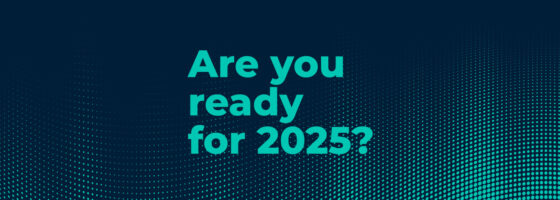As companies grow, their invoicing processes have to resolve an increasing variety of factors. This is especially true for international billing, cross-border payment operations and companies that utilize the increasingly popular usage-based pricing models.
Automated billing is crucial to modernizing B2B billing processes, as it helps streamline the process of sending out recurring billing notices and integrating with billing and accounting software.
Riya Grover, co-founder and CEO of Sequence, a UK-based startup that operates as a “financial router,” joins Converge to discuss its approach to solving this issue. Tackling pricing and billing problems, Sequence has successfully raised capital and secured investments from Andreessen Horowitz and Salesforce Ventures.
Read on to explore the future of B2B billing and learn how Sequence builds flexible price configurations, order forms and automated invoicing, then captures the data to drive more revenue automation.
Automated invoice software in the contract-to-cash process
Many sales teams work off antiquated systems that rely on manual entry of offline data to reflect a variety of contractual terms. These data points are shared with financial teams and then go back to the sales team and, finally, on to the prospective clients.
Grover says these workflows can be inefficient and prone to user error. Automated invoice processing can significantly streamline these operations by reducing the procure-to-pay cycle, eliminating human error and customizing workflows for improved productivity and efficiency.
“Ultimately, companies want to reduce manual effort and build more automation across their business,” Grover says. “So if you think about the way a lot of B2B companies operate today, these activities across the contract-to-revenue process are pretty siloed. There’s a lot of duplication of effort.”
Invoice processing automation addresses these challenges by eliminating manual data entry errors, speeding up the approval process and enhancing overall efficiency and accuracy.
Access to digital records and more data also enables companies to gather critical information about clients that can support upselling and opportunities for more accurate calculations of commissions for sales teams.
Understanding a usage-based pricing strategy
One of the main areas where Grover sees an opportunity is in automating usage-based pricing models, in which users of a SaaS product pay varying amounts depending on their level of consumption.
These models are becoming very popular but can be difficult for sales teams and financing departments to track manually. Automated invoice processing software can simplify such challenges by:
- automating the invoicing process
- enabling custom workflows
- reducing manual tasks and errors
- streamlining operations and
- facilitating mobile accessibility for future business growth
“If you have a very simple pricing model, just a pure subscription business, perhaps it’s not that hard to automate and track what each customer is paying you in a spreadsheet to set up billing for them. But if you now introduce these variable pricing models, [it] actually becomes quite complex to stay on top of everything,” Grover says.
“You should be billing and invoicing a customer and making sure you’re not missing revenue. The move to a modern pricing world and the adoption of these hyper-pricing models across the software space is acting as a big catalyst toward people coming and adopting Sequence.”
Consolidating silos to maximize workflows
Grover notes that spend management is a prime function for smart, integrated automation. Invoice automation can help in consolidating silos and maximizing workflows by streamlining the accounts payable process, enhancing the efficiency of financial operations.
Historically, companies have tried to implement such workflow consolidation in-house, but it’s been expensive and requires a lot of engineers.
Now, young software companies are looking to maximize efficiencies right out of the gate — and Grover says they’ve become prime candidates for a service like Sequence. Accounts payable automation is key to enhancing spend management and financial operations by reducing manual data entry errors and processing times.
“We’re really trying to flip that equation for a young company,” Grover says. “We can actually help them set up and automate flow in a couple of days with self-serve configuration.”
Expanding the B2B and SaaS billing software space
As more companies scale with an automated and adjustable billing system, Grover sees many of them passing on opportunities to build their own systems in-house. Instead, they’re opting for experienced vendors who won’t build them something that’s high-maintenance or clunky.
“I think there’s a big opportunity in this space, and we’ve certainly seen a new wave of players enter the broader billing or quote-to-revenue space that are taking this more modern approach,” Grover says. “I think across the space, there are still a lot of nuances and key differentiators across these players.”
Modern billing solutions can significantly enhance cash flow by enabling faster payment cycles and reducing manual billing efforts, which is essential for businesses looking to improve their financial health and operational efficiency.
She added that it’s important to build infrastructure that integrates with and embeds within a company’s tech stack.
“That means prebuilt integrations with CRM, your own product, your accounting suite, because we recognize that this is critical data that people are going to want to consume in other places,” Grover says.
New cash flow solutions to old challenges for corporate finance teams
As new as these challenges seem, Grover says they’ve been around for a long time. Some even predate the SaaS era altogether.
“We’re solving a lot of problems and a lot of workflows that have always existed for these customers,” Grover says. “These are all workflows that companies have been doing manually or in a siloed way for a long time.”
Ultimately, she notes, the CFOs and other heads of corporate finance teams will be the beneficiaries because automation will free them up to focus on more strategic initiatives. Plus, they’ll have more data to inform their decisions.
“I think we’re going to see the CFO or the finance person and the team become much more strategic, whereby they’re then taking the data that those products spit out … not spending their time doing the manual lower-value things, but actually looking at the data that those products spit out and thinking about how that actually influences their business,” Grover says.
Understanding the importance of revenue recognition is crucial for these teams, as it aids in accurate financial planning and compliance. For automated billing systems that support different invoicing periods, aligning with financial regulations and local accounting recommendations offers a sustainable path forward.
Want more insights on the topics shaping the future of cross-border payments? Tune in to Converge, with new episodes every Wednesday.
Plus, register for the Daily Market Update to get the latest currency news and FX analysis from our experts.
*The information shared on this blog is for informational purposes only and should not be considered financial advice. Please note that the opinions expressed on Converge are solely the opinions of the host and the guests, not Convera’s.



